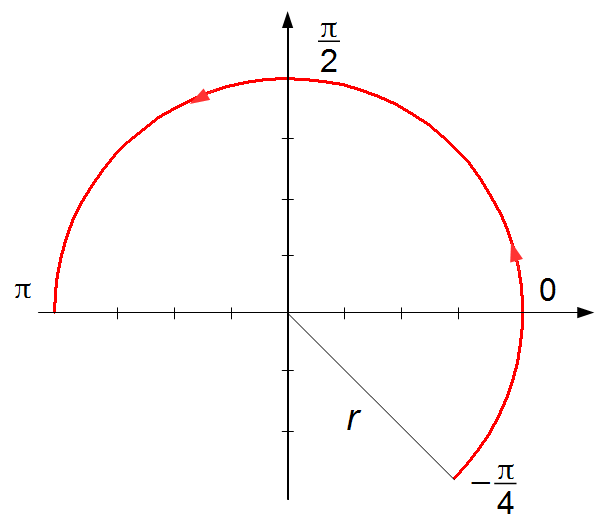Solved Problem on Contours
advertisement
\( \mathsf{b)}\;\; \displaystyle z=r(\cos t+i\operatorname{sen}t)\qquad ,\qquad -\frac{\pi }{4}\leqslant t\leqslant \pi \qquad ,\qquad r\gt 0 \)
The function z is a parametric function of the type
\[ \bbox[#99CCFF,10px]
{z(t)=x(t)+iy(t)}
\]
Identifying the functions x(t) and y(t)
\[
\begin{align}
& x(t)=r\cos t \tag{I}\\[10pt]
& y(t)=r\operatorname{sen}t \tag{II}
\end{align}
\]
squaring the expressions (I) and (II) and adding the two expressions
\[
\begin{gather}
\frac{
\begin{matrix}
x^{2}=r^{2}\cos^{2}t\\
y^{2}=r^{2}\operatorname{sen}^{2}t
\end{matrix}
}
{x^{2}+y^{2}=r^{2}\cos^{2}t+r^{2}\operatorname{sen}^{2}t}\\[5pt]
x^{2}+y^{2}=r^{2}\underbrace{\left(\cos^{2}t+\operatorname{sen}^{2}t\right)}_{1}\\[5pt]
x^{2}+y^{2}=r^{2} \tag{III}
\end{gather}
\]

advertisement

Fisicaexe - Physics Solved Problems by Elcio Brandani Mondadori is licensed under a Creative Commons Attribution-NonCommercial-ShareAlike 4.0 International License .